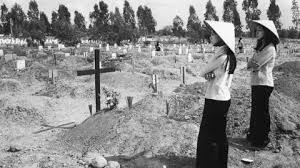
15 January 2016 (Paris, France) – Over the last few years my Project Counsel team and I have been involved in many aspects of war crimes trials and human rights abuse cases. We have been involved in the staffing side (providing attorneys for special projects at various war crimes commissions) as well as my involvement in projects that manage the accumulation/organization of evidence. Through our media division, we have also covered the trials themselves.
Through that work I learned about the latest technologies such as “Next Generation Sequencing” for forensic DNA analysis. In a previous post, for instance, I wrote about the the bodies and bullets unearthed at Srebrenica – with the accused denying any role, even denying the massacre ever happened: “You have no proof!” Forensic pathologists have been digging nearly continuously at Srebrenica since 1995 – excavating 3,000+ mass and clandestine grave sites – using DNA identification technology to name large numbers of missing persons and cross-referencing and “harmonizing” lists and bullet data.
NOTE: this year I had hoped to join a team that has been investigating the killing sites of the Saddam Hussein regime in Iraq after the dictator was toppled in 2003. However, geopolitics has made that impossible.
Last week I learned from colleagues at Forensic Magazine about a most ambitious project being undertaken in Vietnam.
The Vietnam War was a deadly quagmire for the United States and its military. But for Vietnam itself, it was a national tragedy that ripped apart families and villages. To this day, some half million soldiers and civilians remain missing, lost in the fog of a war that ended more than 40 years ago. But now a massive effort to identify the unknown, and lay the dead to rest is set to begin. A German testing company named Bioglobe struck a deal with the Vietnamese government last month, and the world’s largest DNA sequencing project ever will start this March.
The International Commission on Missing Persons (ICMP) will also be part of the venture, according to a report in this week’s Nature magazine (the irony: my issue was delivered the day I spoke with Forensic Magazine).
NOTE: the ICMP was founded in 1996 to help identify an estimated 40,000 person who were killed during the ethnic wars in Bosnia, including the slaughter of 8,000 unarmed people in Srebrenica in 1995.
The Vietnam venture dwarfs that Balkan undertaking. The project is also going to pose some unique logistical challenges that come with a project in Southeast Asia. The heat and humidity, along with soil microbes in the tropical environment, mean that most of the DNA has probably been broken down over the decades, according to the Nature article.
The DNA technology that Bioglobe is planning to use is manufactured by the biotech company Qiagen, which essentially pulverizes bone samples and a chemical breaks down the cells before amplifying them for analysis. You may recognize the company name. Qiagen is a key developer of liquid biopsies, a technology that has enormous diagnostic and treatment implications for oncology, especially tailored cancer therapies. These are the most exciting of technologies. Screw predictive coding.
A societal problem in Vietnam is that many of the victims were young, and had no children themselves. So distant relatives need to be found and tested to identify remains, the Nature report added.
Several DNA testing centers in Vietnam are being upgraded to accommodate the coming influx of samples – and training of experts is already underway. Approximately 10,000 people could eventually be identified per year, officials also told Nature.
And as I have noted before in my e-discovery war crimes journal, the legacy of the Vietnam War continues into the 21st century. The health effects of the spraying of Agent Orange, a carcinogenic defoliant, are still being felt in the country. The U.S. has pledged its help to clean up some of the “hot spots” of the chemical, which will cost in the billions of dollars in years to come – but the U.S. is ever so slow in that funding.